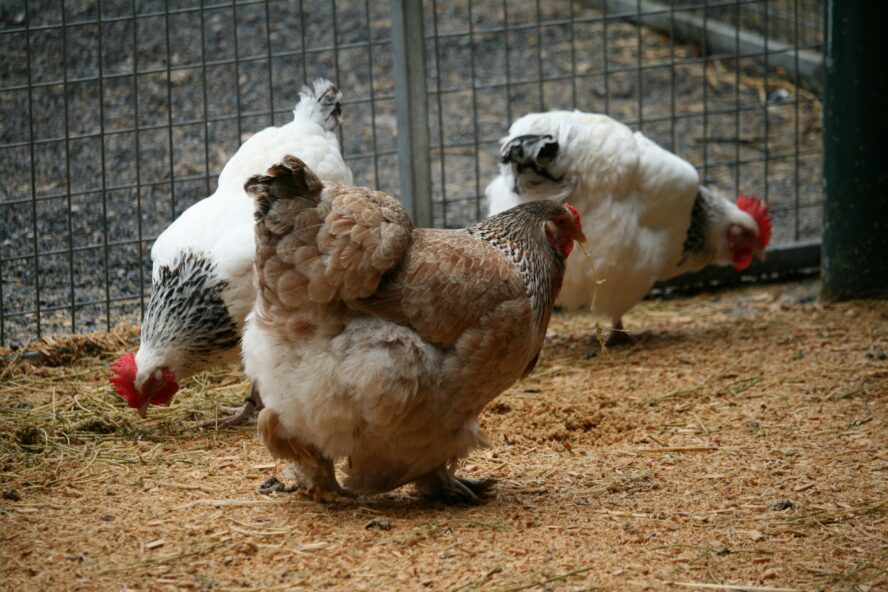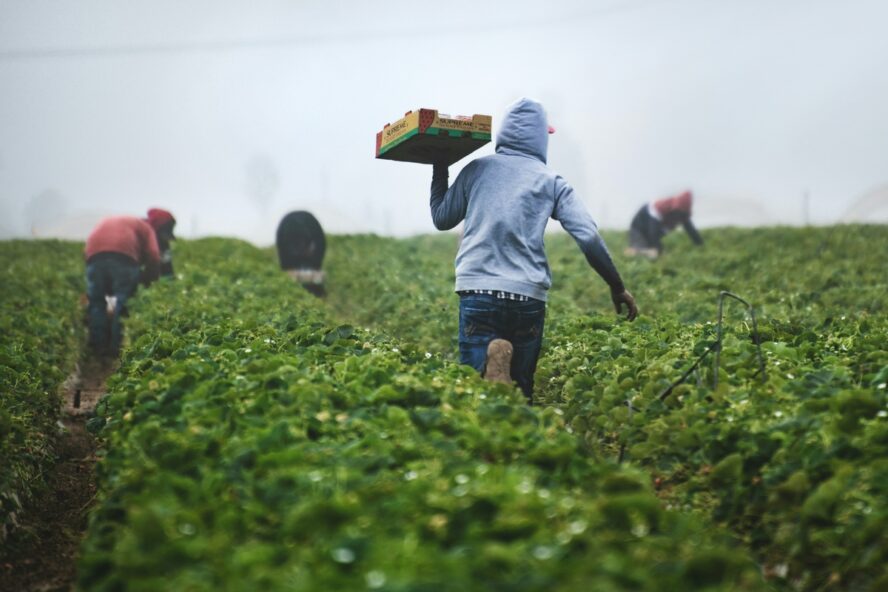
Secretary of the U.S. Department of Health and Human Services, Robert F. Kennedy Jr., has made his goal to “make America healthy again” clear — but do his actions align with his mission? To answer this question, it’s important to remember health isn’t just about avoiding additives and counting calories.
When it comes to food hygiene and public health, RFK Jr. is spearheading a worrisome trend: shrinking the country’s already splintered food safety network by revoking laws, slashing budgets, and enacting layoffs. All of these actions further reduce the administration’s ability to oversee what few regulations remain, putting American health at risk.
In fact, the 2026 FDA budget proposes an overall reduction in full-time staffing across the board. In April, every member of the administration’s media communications team and the US Justice Department unit that once handled drug and food safety cases on behalf of the FDA was disbanded1. This is the unit that once brought a criminal case against former executives at Peanut Corporation for crimes that led to a 2009 outbreak involving more than 700 cases of Salmonella poisoning.
Phyllis Entis, a food safety microbiologist with more than 50 years of experience, tells Food Safety News that these are “desperate times2.” She cites a number of predictions around problems that could affect the food system going forward — here are the four we’re most concerned about.
1. Reduced Attention to Foodborne Disease Outbreaks
One of the major roles of the FDA is tracing foodborne disease outbreaks to help reduce their spread. In 2024 alone, the agency investigated 26 outbreaks and identified the source of 20. In contrast, so far in 2025, the FDA has closed its investigation of 11 outbreaks after identifying the source of only four; 11 additional outbreaks remain under investigation, with an additional four sources identified. In short, we’re looking at a 36 percent success rate as compared to last year’s 77 percent.
The Reduced Workforce Has a Direct Impact

This is no fluke; it’s directly linked to the widespread layoffs. This summer, the CDC reduced its active surveillance of foodborne pathogens from six to just two (Salmonella and E coli), directly citing lack of funding as the motivation for abandoning surveillance of Campylobacter, Cyclospora, Shigella, Yersinia, and Listeria3. FSIS has also proposed withdrawing a baseline threshold of Salmonella contamination in chicken4.
These surveillance pullbacks aren’t coming at a great time — a current listeria outbreak has been ongoing since June, affecting products in 15 states5. Listeria was also the source of a Boar’s Head deli meat contamination last summer that ultimately led to the deaths of ten people6. Thus far, 20 confirmed cases of listeria have been linked to the outbreak, and at least four people have died; a pregnant woman has also experienced fetal loss as a result of a related infection.
Other rollbacks have led to the firing or departure of 20,000 workers from the Department of Health and Human Services. This reduction of the workforce has led to the suspension of both a quality control program for the testing of fresh milk and produce, as well as another program designed to ensure consistency and accuracy across its 170-lab network that tests food for pathogens and contaminants.
Former USDA inspector Paula Soldner, who took a voluntary early retirement in May, told NPR that she was concerned that the remaining inspectors would be incapable of visiting the number of facilities their job now required — eight per day rather than the usual four7. “Do I foresee another Boar’s Head situation? Absolutely,” she told the outlet. “I worry about the public.”
2. A Hands-Off Approach to Livestock Diseases Could Cause a New Pandemic
In the midst of reduced food safety surveillance, livestock diseases are also growing more and more worrisome. As superbacteria run rampant, outbreaks like avian flu become more difficult to contain8. This particular outbreak of the H5N1 virus (bird flu) has been ongoing since 2020 and has led to millions of chicken slaughters, outbreaks in dairy cattle, and at least one confirmed human death9.
Because the virus leads to mortality in nearly 100% of the cases in domestic chickens, some have suggested the best solution to the outbreak is calculated culling10. However, Kennedy and the Secretary of Agriculture have proposed a more hands-off approach, calling for bird flu to “rip through” infected flocks. Most experts are vehemently opposed to this approach, as exemplified by an argument published by a group of virologists, veterinarians, and health security experts this summer in Science11. In the report, they wrote that this plan would likely pave the way for a true pandemic — and pose even more risks for human health.

“Essentially, the longer you allow a virus that has shown to be effective in infecting multiple hosts survive in an environment, the greater the chance you give it to spread, to mutate, and to try its luck at adaptation,” the report’s author Erin Sorrell, a virologist at the Johns Hopkins Center for Health Security, told Live Science12. “Worse case scenario, the virus adapts and expands its host range to become transmissible in humans … Now we have a pandemic.”
Kennedy’s proposed hands-off approach is likely linked, once more, to staff cuts. Though experts say that the best way to combat bird flu would be to improve data sharing, enhance surveillance of viral spread, and work with interdisciplinary teams, cuts at the USDA’s Animal and Plant Health Inspection Service have quite simply reduced the agency’s ability to combat this and other livestock diseases.
3. Layoffs Endanger Planning for the Future of Critical Health and Nutrition Trends
According to a news release from the American Society for Nutrition, layoffs at the CDC’s National Center for Health Statistics have jeopardized the future of the National Health and Nutrition Examination Survey (NHANES), which hinders our ability to monitor and understand critical health and nutrition trends.
The personnel that lost their jobs in a wide spate of layoffs this month were responsible for a survey dating to the early ‘60s assessing the health and nutritional status of millions of Americans13. This data is used to guide federal policymaking, including food labeling, dietary guidances, and nutrition research priorities, influencing billions of dollars in federal investments. This survey has previously informed public health issues like the effects of lead in petrol, and now it’s at risk of disappearing.
Former CDC staff member Asher Rosinger, an epidemiologist at Pennsylvania State University in University Park, told Nature that due to the layoffs, “this gold standard survey may no longer be able to operate in the future.”
4. Anti-Migrant Policies Result in a Reduced Ability to Produce Safe, Healthy Crops
Not all of the issues plaguing our food system are linked to budget cuts. The Trump administration’s deportation raids have severely reduced the nation’s ability to produce enough food domestically, according to a filing to the Federal Register submitted on Oct. 2 by the Department of Labor. Trump’s anti-migrant policies pose a threat to the “stability of domestic food production and prices for U.S consumers,” says the filing. The Department says this is a reflection of a “structural, not cyclical, workforce crisis.”

Industry insiders agree. In a press release, the National Milk Producers Federation wrote that “aggressive immigration enforcement, including on dairies, can’t help but raise concerns.” And according to the Guardian, the widespread deportation plans are sure to lead to “major disruptions across the food system,” as well as rising prices for many staples nationwide.
Compounded with Trump’s new tariffs on imports, this could make produce prohibitively expensive for many Americans. Especially as we come into colder months when we typically rely more on south-of-the-border imports, access to healthy food is likely to become more difficult — a far cry from making America healthy again.
Sources:
- https://www.reuters.com/business/healthcare-pharmaceuticals/us-justice-department-unit-drug-food-safety-cases-being-disbanded-2025-04-25/
- https://www.foodsafetynews.com/2025/09/trump-aided-by-rfk-jr-is-dismantling-the-u-s-food-safety-network/
- https://www.cidrap.umn.edu/foodborne-disease/cdc-cuts-back-foodborne-illness-surveillance-program
- https://www.fsis.usda.gov/policy/federal-register-rulemaking/federal-register-rules/salmonella-framework-raw-poultry-products
- https://eu.usatoday.com/story/money/food/2025/10/13/pasta-recall-listeria-outbreak/86664343007/
- https://epi.ufl.edu/2024/12/10/why-listeria-a-less-common-foodborne-pathogen-is-so-deadly/
- https://www.npr.org/sections/shots-health-news/2025/05/29/nx-s1-5413449/food-safety-inspection-fda-usda
- https://pubmed.ncbi.nlm.nih.gov/38927217/
- https://www.cdc.gov/bird-flu/situation-summary/index.html
- https://pmc.ncbi.nlm.nih.gov/articles/PMC4897471/
- https://www.science.org/doi/10.1126/science.adx8639
- https://www.livescience.com/health/flu/rfks-proposal-to-let-bird-flu-spread-through-poultry-could-set-us-up-for-a-pandemic-experts-warn
- https://www.nature.com/articles/d41586-025-03365-1

